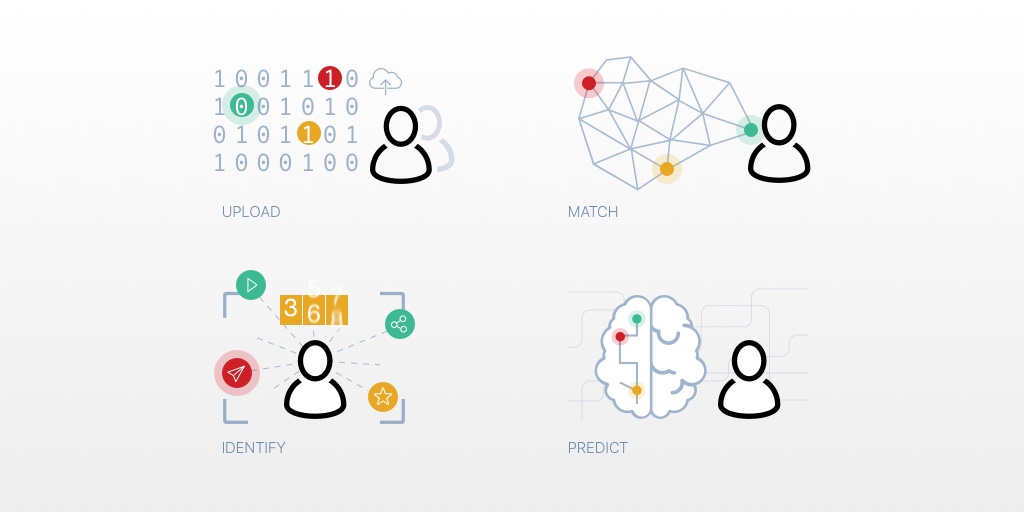Intent data enables the pinpoint clarity needed to resonate with accounts and prospects in market for your solutions. But how is intent data collected? Where does it come from and how can you leverage it?
Footprints in the Snow
If you think of a web user’s journey as like walking through fresh snow, intent data is the footprints left behind; highlighting where a user has come from - and importantly, the direction they’re going in.
In other words, intent data is the information about a web user’s behaviour and consumption of content (the footprints), that provides us - B2B marketing and sales professionals - with insight into where they are in the buying journey (where they’ve come from), what sort of content they’ll be interested in next, and if they’re showing intent to buy (where they’re going).
But just like footprints in the snow, not all intent data is the same.
B2B intent data can be collated from numerous data sources that when combined, provides a wider intelligence over a web user’s interests and intent to learn more about/ purchase a solution. Knowing the difference between the types of data that intent campaigns consider is essential to ensure you can maximise its effectiveness in informing campaigns.
Different Types of Intent Data
There are a few ways that intent data can be classified. Overall, intent tends to fall into one of two main categories: Internal (first-party) or external (third-party). However there are other data categories which that data can also be classified as, such as known or unknown, or topic or contextual.
There is often a crossover between these classifications - you can have first-party data that is known, and contextual, for example.
But before we explore where they overlap, let’s define different types of data that can enhance intent campaigns.
Internal/ First-Party
As the name suggests, this is data acquired by you, through your own resources and content; whether that’s analytics data about visitors on your website, information collected via your marketing automation platform, or even internal reports. This data can be highly predictive of purchase intent - for example, you can see when a visitor is consistently looking at your pricing page, or specific topic-relevant content.
External/ Third Party
Third-party data is data acquired from an external source to your organisation - such as a data collection company. Note that a third-party data partner will not have any direct connection to the users who supplied the data, whereas a second-party data partner will simply be exchanging their own first-party data with you. As a result, third-party data will be more detailed, often collating a range of data sources which can enrich your existing database - and so tends to require more investment (and of course, requires care to adhere to regulation and legislation).
Within internal and external, data can also be classified as:
- Known data. Data that is trackable down to the individual, such as information collected through personal consent on a sign-up form - is ‘known’ and identifiable, or not anonymous.
- Unknown data. Data that is trackable only down to a company-level via IP address tracking and company mapping, is ‘unknown’ data.
- Topic data. Data based entirely around the topic or subject of the content the user is consuming, is topic data.
- Contextual data. Data that digs into who a user actually is, where they are in their buying journey and what they’re looking to solve /gain/ achieve, among other factors, is contextual data.
As mentioned, while these are clear ways of distinguishing different types of data, there is also a lot of crossover. In fact, in most cases, intent data can be categorised as one each of first/ third-party, known/ unknown and topic/ contextual.

How is Intent Data Collected?
How you collect intent data comes down to whether it is 1st or 3rd party data (or both) that you’re looking for.
For first-party data, you must look within your own reporting, CRM and web analytics.
- To find unknown 1st party data, you can analyse and track accounts that are interacting and consuming your content on an IP level through a variety of tools.
- Known first party data is easier to find once acquired - this comes from form submissions on your own website, and the subsequent data and information generated, like name, company and job title.
Third-party data must be acquired by partnering with a third-party provider or partner, who can help you enhance first-party data with third-party insight, and identify your interested or addressable market.
- Unknown 3rd party data. There are various vendors or intent partners who can track visitors (at a company level) who engage with content on a competitor site, or other sites related to your industry.
- Known 3rd party data. This must also be accessed via a vendor partner, and comes from form submissions, acquired through forms from competitor sites or more likely, industry blogs.
4 Ways to Use Intent Data to Enhance B2B Campaigns
1. Prioritisation
By using intent to identify leads who are particularly engaged with either your or your competitor’s content, you can then map that to where they are in the buyer’s journey, and begin to prioritise how, where and on which accounts your marketing efforts should be focused.
2. Personalisation
If you have enough data on a user, you can begin to personalise content for them. Perhaps they are a CEO at a medium-sized tech company, and they’re reading about yours and competitor’s products. It appears they’re in the consideration phase of the buyer journey, so perhaps via personalisation tools, you could serve up a web demo offer with a personalised CTA and copy.
3. Lead Identification
Through the acquisition of third-party data you can identify potential clients who are in the awareness or consideration stage of the buyer journey, but aren’t accessing your content.
You can then target these types of accounts specifically through paid ads.
4. Lead Nurturing
By combining both first-party and third-party data, you’ll be able to identify both who a lead is, the contextual data of their job role and how it fits into their organisation, and the topical data of what types of content they’re interested in/ consuming.
Considering Intent Data
To return to our snow analogy: intent data is very much like a freshly made trail of footprints - if it’s going to be followed, it needs to be done so early and consistently.
By combing the different types of intent data - first-party (internal), third-party (external), and known and unknown, topic and contextual - you’ll be able to build up a clearer picture of the journey your clients and potential clients are taking, and how and where on that path you can join them.






